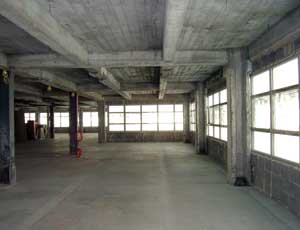Damaged during the attacks of Sept. 11, the demolition of Borough of Manhattan Community College building begins.
Fiterman Hall is finally coming down, and for the City University of New York and the Lower Manhattan community, the resulting hole in the ground will be a most welcome site.

Miles and Shirley Fiterman donated the 15-story, 375,000-sq-ft building at 30 W. Broadway to the Borough of Manhattan Community College in 1993. The circa 1959 office building served as an extension of BMCC’s 199 Chambers Street Campus and provided classrooms, computer facilities and offices for the space-constrained college.
On Sept. 11, debris falling from 7 World Trade Center tore a deep gash and severely damaged the south façade of Fiterman, which at the time of the attack was undergoing a $65-million renovation. The interior of the facility was coated with a toxic stew of dust from the adjacent destroyed buildings.
“We lost about 20% of our classroom ability for the campus,” says Iris Weinshall, CUNY’s vice chancellor for facilities planning, construction and management. “It came at a really bad time for the college, which was steadily growing in terms of enrollment.”
CUNY decided to dismantle the building and construct a new facility in its place after environmental and structural inspections deemed Fiterman beyond repair and its interior contaminated.
But efforts to demolish and rebuild the facility over the past eight years have been plagued by delays while CUNY negotiated an insurance settlement, developed detailed decontamination and deconstruction plans to satisfy regulatory agencies and wrangled with city and state officials over funding.
The project finally received a green light in November when the city agreed to finance $139 million of the $325-million project cost. The remainder of the funding is coming from the insurance settlement, New York State, the Lower Manhattan Development Corporation and the September 11th Fund.


Post a comment to this article
Report Abusive Comment